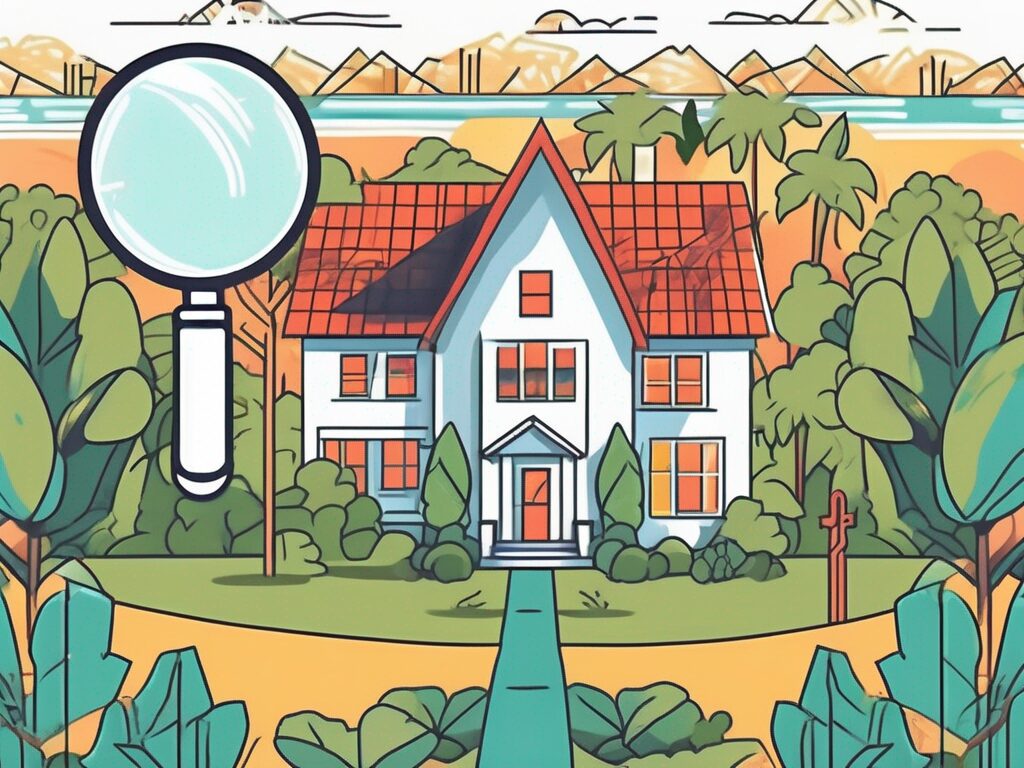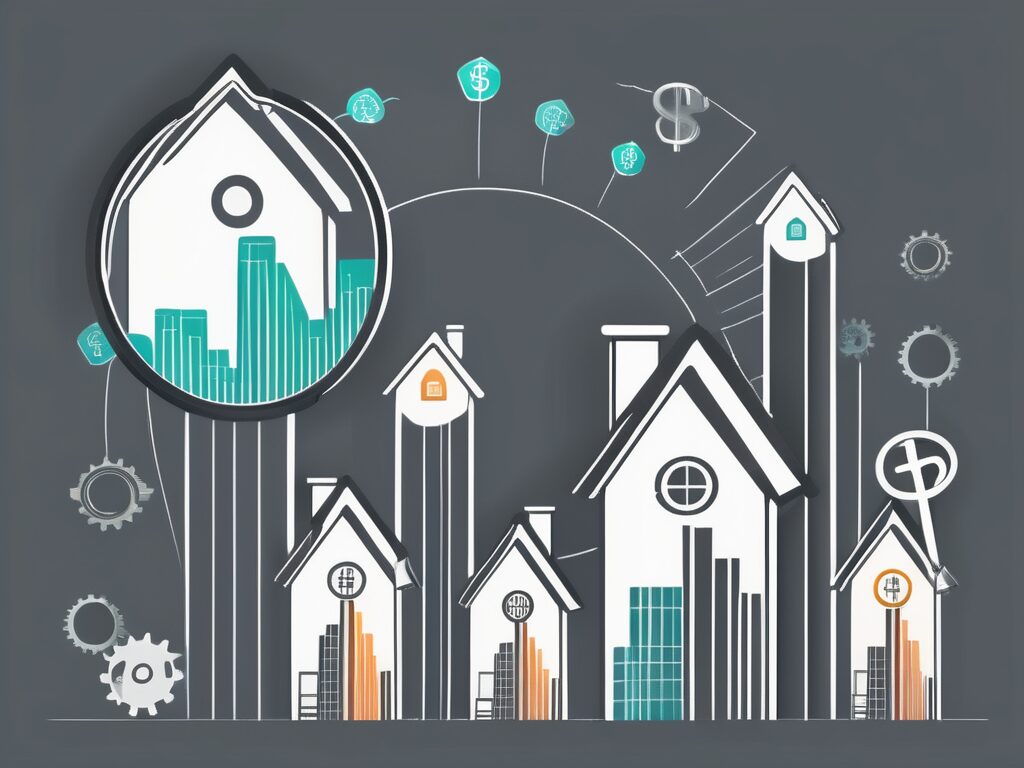
Agent A-Team or Solo Superhero? Finding the Right Real Estate Partner for Your Selling Journey in Wildwood Florida
When it comes to selling your home in Wildwood, Florida,…
January 29, 2024
The housing market in America has been experiencing a steady increase in home prices over the past decade. Many factors contribute to this rise, making it a fascinating subject to explore. In this article, we will delve into the various influences that drive up home prices and the impact they have on the housing market.
Consumer confidence plays a significant role in shaping the housing market. When consumers feel optimistic about the economy and their own financial situations, they are more willing to invest in real estate. This increased demand drives up home prices, creating a seller’s market. Additionally, consumer confidence affects the willingness of individuals to take on mortgage debt, which further fuels the upward trajectory of housing prices.
However, it is essential to recognize that consumer confidence can also fluctuate. Economic uncertainty or unfavorable market conditions can lead to a decrease in consumer confidence, which in turn can slow down the rise in home prices.
For example, during times of economic recession, consumer confidence tends to plummet as individuals become more cautious about their financial stability. This decrease in confidence translates into a decrease in housing demand, causing home prices to stabilize or even decline. On the other hand, during periods of economic growth and stability, consumer confidence soars, leading to a surge in housing demand and subsequent price increases.
Furthermore, consumer confidence is influenced by various factors such as job security, income growth, and overall economic indicators. When people feel secure in their employment and see their incomes rise, they are more likely to have confidence in the housing market and make the decision to purchase a home. Conversely, if there is widespread job insecurity or stagnant wage growth, consumer confidence may waver, resulting in a more cautious approach to homebuying and potentially slowing down the rise in home prices.
Government regulations, such as zoning laws and building codes, can significantly impact the housing market. While these regulations are necessary for maintaining safety and order, they can also restrict the supply of housing. Limited supply, coupled with increasing demand, creates a situation where home prices skyrocket. Furthermore, regulations that make it difficult for developers to build new homes can exacerbate the issue.
However, it’s important to strike a balance between regulation and allowing for market-driven growth. Policymakers need to be mindful of the potential consequences on housing affordability when implementing or amending regulations.
For instance, in densely populated urban areas where space is limited, zoning laws may restrict the construction of high-rise buildings or multifamily housing. While these regulations aim to preserve the character and livability of the neighborhood, they can also contribute to a shortage of available housing units. As a result, the limited supply drives up home prices, making it more challenging for individuals to afford a home in these desirable areas.
On the other hand, in areas with lax regulations, developers may have more freedom to build without restrictions. While this can increase the housing supply and potentially stabilize prices, it may also lead to issues such as overcrowding or the construction of low-quality housing. Striking the right balance between regulation and market-driven growth is crucial to ensure a sustainable and affordable housing market.
The availability of low mortgage interest rates has a profound impact on the housing market. When rates are low, borrowing becomes cheaper, increasing the purchasing power of potential homebuyers. This surge in demand, without a corresponding increase in supply, leads to elevated home prices.
Low mortgage interest rates also incentivize current homeowners to refinance their existing mortgages, freeing up additional funds that can be used for home improvements or other investments. This increased liquidity in the market further contributes to rising prices.
For example, during periods of economic downturn or when the central bank implements monetary policies to stimulate the economy, interest rates are often lowered to encourage borrowing and spending. This reduction in mortgage rates entices more individuals to enter the housing market, driving up demand and subsequently pushing home prices higher.
Additionally, low mortgage interest rates can create a sense of urgency among potential homebuyers. When rates are at historically low levels, buyers may feel compelled to act quickly before rates rise again. This heightened demand can lead to bidding wars and further inflate home prices.
A robust job market not only improves the quality of life for individuals but also has a direct correlation to housing prices. When employment opportunities are abundant, people have higher income potential, making homeownership more achievable. This heightened demand for housing often outpaces supply, resulting in an upswing in home prices.
In areas with a thriving employment sector, such as technology hubs or cities experiencing significant economic growth, home values tend to rise at a faster rate. The influx of highly-skilled professionals into these regions further adds fuel to the fire, as competition for limited housing intensifies.
For instance, cities like San Francisco, Seattle, and Austin have experienced rapid economic growth due to the presence of major tech companies. As these cities attract a large number of highly-paid tech workers, the demand for housing increases significantly. The limited supply of homes in these areas, coupled with the high demand, leads to skyrocketing home prices.
Moreover, a thriving employment sector not only attracts workers but also stimulates local businesses and infrastructure development. As the local economy flourishes, the overall desirability of the area increases, further driving up home prices.
The location of a property is a crucial factor that influences its value. Proximity to expensive markets can significantly impact home prices in neighboring areas. When individuals are priced out of these expensive markets, they often look for more affordable options in nearby regions. As a result, the demand for housing increases, driving up prices in those areas.
This phenomenon, known as the ‘spillover effect,’ can be seen in cities like San Francisco and New York, where residents seek more affordable housing in neighboring suburbs or towns. Additionally, investors may also flock to these areas, further intensifying the competition for homes and raising prices.
For example, in the San Francisco Bay Area, the high cost of housing in San Francisco has led many individuals and families to explore more affordable options in cities like Oakland, Berkeley, and San Jose. As the demand for housing in these neighboring areas increases, so do the prices. This ripple effect extends to even more distant regions, as individuals seek to find affordable homes within commuting distance of expensive markets.
Furthermore, proximity to expensive markets can also have positive effects on home prices. In some cases, the desirability of being close to major economic centers, cultural attractions, or prestigious educational institutions can drive up demand and subsequently increase home prices in nearby areas.
Insufficient housing inventory is a significant challenge in today’s housing market. When the supply of homes available for sale is limited, buyers have fewer options, leading to increased competition. This competition often results in bidding wars, where buyers are willing to pay above asking prices, driving up home values.
The low inventory issue can be attributed to various factors, such as delays in new construction, limited land availability, or a lack of seller motivation. To address this problem, it is crucial to encourage new developments, streamline the approval process, and incentivize homeowners to put their properties on the market.
For instance, in rapidly growing cities where demand for housing outpaces supply, the construction of new homes may struggle to keep up. Delays in obtaining permits, zoning restrictions, or a shortage of skilled labor can contribute to the slow pace of new construction. As a result, the limited number of available homes drives up prices, making it more challenging for prospective buyers to enter the market.
In addition, a lack of seller motivation can also contribute to low inventory. Homeowners may be hesitant to sell their properties if they believe they won’t be able to find a suitable replacement or if they anticipate further price appreciation. This reluctance to sell further restricts the supply of homes, exacerbating the issue of rising prices.
Natural disasters can have a devastating impact on housing costs. When an area is struck by a hurricane, flood, or wildfire, the demand for housing typically surpasses the supply. This surge in demand can lead to a rapid increase in home prices as affected residents and those from surrounding areas compete for the limited available housing.
Additionally, the cost of insurance may rise in disaster-prone regions, making it more expensive for homeowners to protect their properties. This added expense can further contribute to higher home prices as insurance costs are factored into the overall affordability equation.
For example, in areas prone to hurricanes, such as coastal regions in the United States, the destruction caused by these natural disasters often leads to a shortage of habitable homes. As residents are displaced and seek temporary or permanent housing solutions, the demand for available homes surges. This sudden increase in demand, combined with the limited supply, drives up home prices in the affected areas.
Furthermore, the cost of rebuilding or repairing damaged homes after a natural disaster can also contribute to rising home prices. As construction materials and labor become scarce, the expenses associated with rebuilding increase. These higher costs are ultimately passed on to homebuyers, further adding to the overall increase in housing prices.
A recession can wreak havoc on the housing market, causing home values to plummet. During an economic downturn, unemployment rates rise, income levels decline, and consumer confidence takes a hit. As a result, demand for homes diminishes, leading to a decrease in housing prices. Distressed sales and foreclosures become more prevalent, further exacerbating the downward spiral.
However, it’s worth noting that the extent of the impact on home values during a recession varies depending on the region and the severity of the economic downturn.
For example, in the 2008 financial crisis, some areas experienced a significant decline in home values, while others were relatively unaffected. This discrepancy can be attributed to various factors, such as the strength of the local economy, the level of housing market speculation, and the availability of job opportunities. Regions heavily reliant on industries that were hit hard by the recession, such as manufacturing or finance, saw a more pronounced decrease in home values compared to areas with more diversified economies.
Furthermore, the severity of the economic downturn also plays a role. A mild recession may lead to a temporary dip in home values, but they can quickly recover once the economy rebounds. On the other hand, a severe recession, like the Great Depression of the 1930s, can have long-lasting effects on the housing market, with home values taking years or even decades to fully recover.
High unemployment rates are detrimental to the housing market. When individuals lose their jobs or face financial uncertainties, their ability to afford homeownership diminishes. This decrease in demand can lead to a decline in home prices.
Moreover, high unemployment rates often result in an increase in foreclosures and an oversupply of inventory. The surplus of available homes further dampens market values, creating a challenging environment for homeowners and developers.
During periods of high unemployment, the real estate market can become flooded with distressed properties. These properties are often sold at significantly lower prices, dragging down the overall value of neighboring homes. Additionally, the oversupply of inventory can lead to increased competition among sellers, forcing them to lower their asking prices to attract potential buyers.
An oversupply of housing inventory can have a detrimental effect on home values. When there are more homes available for sale than there are buyers, prices tend to decrease. Sellers may be forced to reduce their asking prices to attract potential buyers, resulting in a downward pressure on the overall market.
This oversupply issue can arise due to various circumstances, such as overbuilding, a decline in population, or an imbalance in supply and demand dynamics. To mitigate the negative impact, developers and policymakers must closely monitor market conditions and adjust construction plans accordingly.
Overbuilding, in particular, can have a significant impact on home values. When developers construct an excessive number of new homes without considering the demand, it can lead to an oversupply situation. This oversupply not only affects the newly built properties but also has a ripple effect on the existing housing stock. The increased competition from the surplus of new homes can drive down prices and make it more challenging for homeowners to sell their properties at desirable prices.
Additionally, a decline in population can contribute to an oversupply of inventory. When a region experiences a decrease in residents, either due to outmigration or a decline in birth rates, the demand for housing naturally decreases. If the housing supply does not adjust accordingly, an oversupply situation can arise, putting downward pressure on home values.
Understanding the factors that contribute to an oversupply of inventory is crucial for policymakers and developers. By closely monitoring market conditions and adjusting construction plans based on demand projections, they can help maintain a healthy balance between supply and demand, thereby stabilizing home values.
In conclusion, rising home prices in America are influenced by a complex interplay of factors. Consumer confidence, government regulations, low mortgage interest rates, employment sectors, proximity to expensive markets, low inventory, and natural disasters all play a significant role in shaping the housing market. Conversely, recessions, high unemployment rates, and an oversupply of inventory can lead to a decrease in home values. Understanding these influences can help stakeholders make informed decisions and navigate the ever-changing landscape of the real estate market.

If you want the Richr team to help you save thousands on your home just book a call.
 Book a call
Book a call